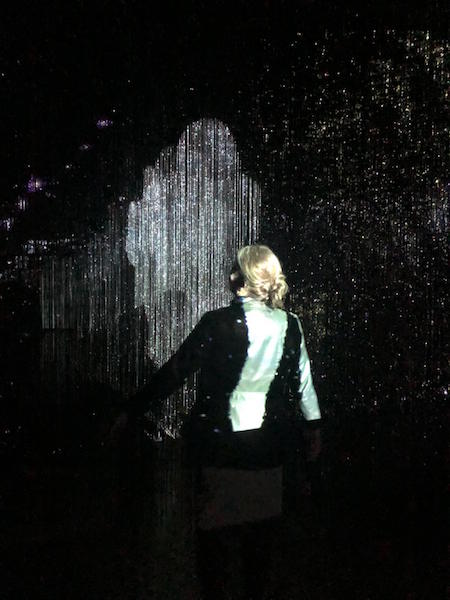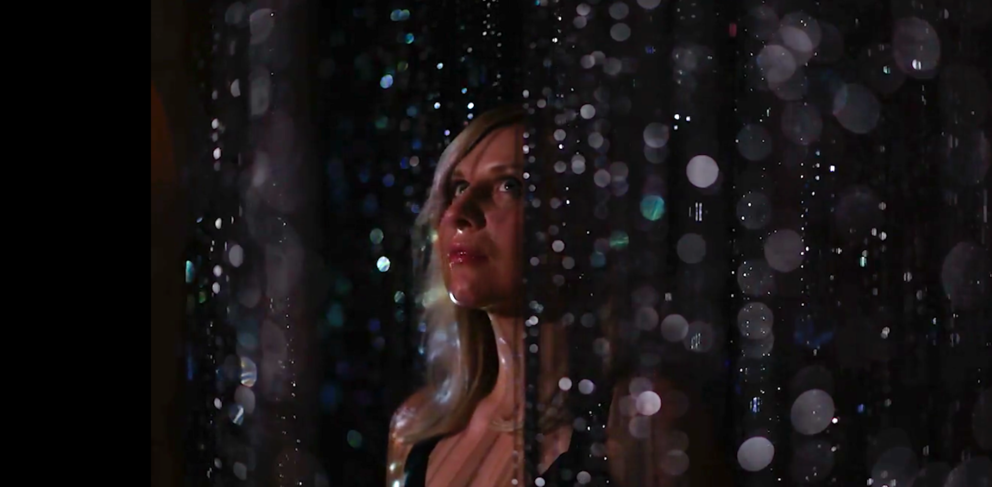On social media, women struggled with painful personal recollections as well as a culture that continues to doubt the veracity of their stories. Some sought temporary respite from the emotional burden by heading out into nature, sharing photos of mountain hikes and beach walks. Some escaped via cute animal videos.
Can art provide a mental health reboot in times like these? It’s worth a shot. Three new shows by women artists from the Pacific Northwest offer the chance to turn away from the news for a moment and fill your eyes, ears and imagination with work made from a female point of view. Using distinct, immersive mediums, each of these artists encourages us to tap into a greater humanity — our connection with animals, our creative brains, our origins as stardust — and hold tight to that deep understanding. Let this work serve as a curative counterbalance to demoralizing daily news.
1. We Are All Made of Light, Maja Petrić’s multimedia installation at MadArt Studio, urges visitors to leave earthly troubles behind and step inside a galaxy of stars. Rectilinear curtains of black thread — embedded with light-catching sparkles — hang floor to ceiling, creating an immersive cube that seems capable of transporting participants through time and space (much like the TARDIS machine from Dr. Who).

With the gallery completely darkened, projections (NASA footage, amoebic blobs) move across the threads to create a glistening light show with a slow-motion drift one might expect to experience in zero gravity. Kinect technology maps visitors’ bodies and casts reverse shadows made of light onto one side of the thread-box, where human movement generates a meteoric trail. Standing in the center of the installation feels akin to being inside one of Yayoi Kusama’s Infinity Mirrors, surrounded by twinkling lights that stretch outward for what feels like forever.
Based in Seattle for the last decade, Petrić grew up in Croatia during the 1991 War for Independence, which she says inspired her to make art that helps lift people out of “disturbing realities” and into spaces of awe, wonder and the sublime. On her website, she says the current political crisis “reminds me of the ... gloomy realities of my childhood” and vows “to again turn to art to transcend politics and engage people’s primordial sensations, to remind them of their connection to nature and to elicit a profound response that helps them catch a glimpse, however fleeting, of the essence of life.”
2. With her high-tech installation Illusion, at 4Culture Gallery, artist Haein Kang also aims to stimulate and expand human perception. But instead of looking to the stars, she’s peering deep inside our brains.
Born and raised in Korea and now a Ph.D. candidate in UW’s digital arts program, Kang has created a machine that combines EEG technology with a more poetic, synesthetic interpretation of mental chatter. She says it’s an attempt to “capture inner conflicts and aspirations… and reconstruct them into a formative language.”

The components of her machine (one of several she calls “useless, but working for beauty”) include: a participant hooked up to a helmet of electrodes; a large projection screen; and a row of eight Rube-Goldberg-esque percussive instruments triggered by different alpha waves moving through the brain when the participant’s eyes are closed. The resultant rhythm concert sounds something like raindrops on canvas, a bouncing marble and wind chimes — depending on the mindset of the person wearing the headset.
“The sound is affected by the performer’s state of mind,” says Jordan Howland at 4Culture, where the work is now installed. “If Haein was looking at a photograph of Donald Trump or watching a video of the Kavanaugh hearing ... and then closed her eyes to play the instruments, we would most definitely experience a percussive shift from a previous performance where she was looking at a bucolic landscape or kittens playing with string.” (Howland clarifies that this particular scenario has not been tested.)
Kang will demonstrate the machine on Oct. 4, during Pioneer Square art walk, and those curious to have their own mindset transposed to percussion can attend Kang’s “Gentle Introduction to EEG” workshop. Just remember her instructions: try to relax, and breathe.
Or maybe it’s time to take shelter in a giant she-wolf. Portland artist Marie Watt’s “Companion Species (Underbelly),” at Greg Kucera Gallery, is an enormous sculpture of a mother wolf lazing on her side, full teats exposed. Constructed of layered aromatic cedar, the 11- by 15-foot piece isn’t just visual art but fragrance art, enveloping viewers in its woodsy scent.
Watt is a member of the Turtle Clan of the Seneca Nation (Iroquois), which like many Native American tribes considers cedar to be cleansing. She writes that her she-wolf, while inspired by La Lupa Capitolina of Roman myth, is intended as “shelter and protection” for gallery visitors.
“I am interested in how an underbelly is both the soft fleshy vulnerable part of a body, but also how it is associated with dark hidden areas,” Watt says on her website. It’s a statement that feels especially relevant to current cultural divides and accompanying personal anxieties. In considering the human relationship with nature, Watt is specifically reflecting on canines as “mythological guides and first teachers.”
The she-wolf is surrounded by smaller images of wolves and dogs. One of them, stitched onto a beige wool blanket in black thread, is depicted mid-howl or bark, calling out to companion species. Translated in embroidered text, the animal’s speech contains lyrics from Marvin Gaye’s “What’s Going On?” The song was originally inspired by the social and political turmoil of the Vietnam War, and in Watt’s depiction, feels like an interspecies plea for sanity.
Crosscut arts coverage is made possible with support from Shari D. Behnke.




